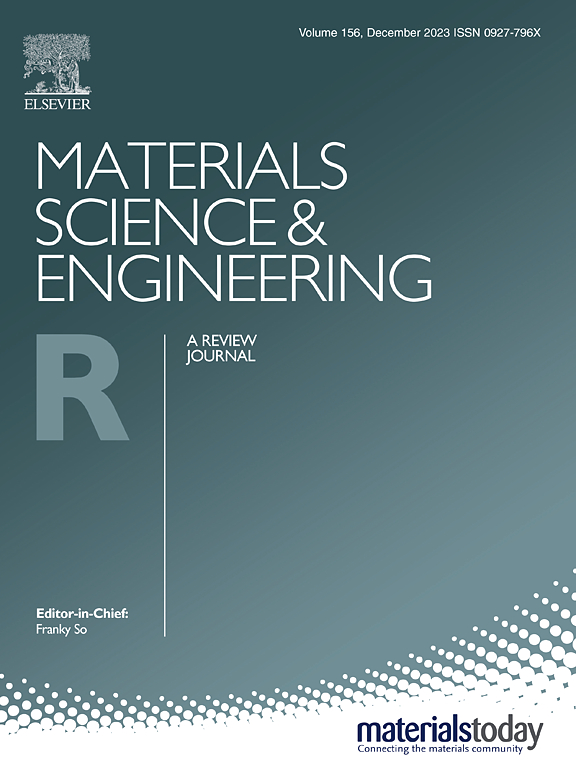Substitutional doping of 2D transition metal dichalcogenides for device applications: Current status, challenges and prospects
IF 31.6
1区 材料科学
Q1 MATERIALS SCIENCE, MULTIDISCIPLINARY
引用次数: 0
Abstract
Two-dimensional (2D) transition metal dichalcogenides (TMDs) have emerged as a class of materials with exceptional electronic, optical, and mechanical properties, making them highly tunable for diverse applications in nanoelectronics, optoelectronics, and catalysis. This review focuses on substitutional doping of TMDs, a key strategy to tailor their properties and enhance device performance, with a focus on its applications over the past five years (2019–2024). We delve into both theoretical and experimental doping approaches, including established methods like chemical vapor transport (CVT) and chemical vapor deposition (CVD) alongside liquid phase exfoliation (LPE) and post-synthesis treatments. Advanced growth techniques are also explored. Challenges like dopant uniformity, concentration control, and stability are addressed. The influence of various dopants on the electronic band structure, carrier concentration, and defect engineering is analyzed in detail. We further explore recent advancements in utilizing doped TMDs for field-effect transistors (FETs), photodetectors, sensors, photovoltaics, optoelectronic devices, energy storage and conversion, and even quantum computers. By examining both the potential and limitations of substitutional doping, this review aims to propel future research and technological advancements in this exciting field.
二维过渡金属二硫族化合物在器件应用中的替代掺杂:现状、挑战和前景
二维(2D)过渡金属二硫族化合物(TMDs)已成为一类具有卓越的电子,光学和机械性能的材料,使其在纳米电子学,光电子学和催化领域的各种应用中具有高度可调性。本文重点介绍了tmd的替代掺杂,这是定制其特性和提高器件性能的关键策略,并重点介绍了其在过去五年(2019-2024)的应用。我们深入研究了理论和实验掺杂方法,包括化学气相输运(CVT)和化学气相沉积(CVD)以及液相剥离(LPE)和合成后处理等现有方法。还探讨了先进的生长技术。解决了掺杂均匀性、浓度控制和稳定性等挑战。详细分析了各种掺杂剂对电子能带结构、载流子浓度和缺陷工程的影响。我们进一步探讨了利用掺杂tmd用于场效应晶体管(fet)、光电探测器、传感器、光伏、光电器件、能量存储和转换,甚至量子计算机的最新进展。通过研究替代兴奋剂的潜力和局限性,本文旨在推动这一令人兴奋的领域的未来研究和技术进步。
本文章由计算机程序翻译,如有差异,请以英文原文为准。
求助全文
约1分钟内获得全文
求助全文
来源期刊

Materials Science and Engineering: R: Reports
工程技术-材料科学:综合
CiteScore
60.50
自引率
0.30%
发文量
19
审稿时长
34 days
期刊介绍:
Materials Science & Engineering R: Reports is a journal that covers a wide range of topics in the field of materials science and engineering. It publishes both experimental and theoretical research papers, providing background information and critical assessments on various topics. The journal aims to publish high-quality and novel research papers and reviews.
The subject areas covered by the journal include Materials Science (General), Electronic Materials, Optical Materials, and Magnetic Materials. In addition to regular issues, the journal also publishes special issues on key themes in the field of materials science, including Energy Materials, Materials for Health, Materials Discovery, Innovation for High Value Manufacturing, and Sustainable Materials development.
 求助内容:
求助内容: 应助结果提醒方式:
应助结果提醒方式:


